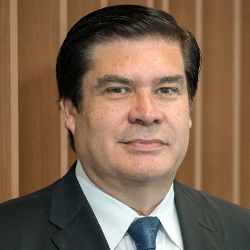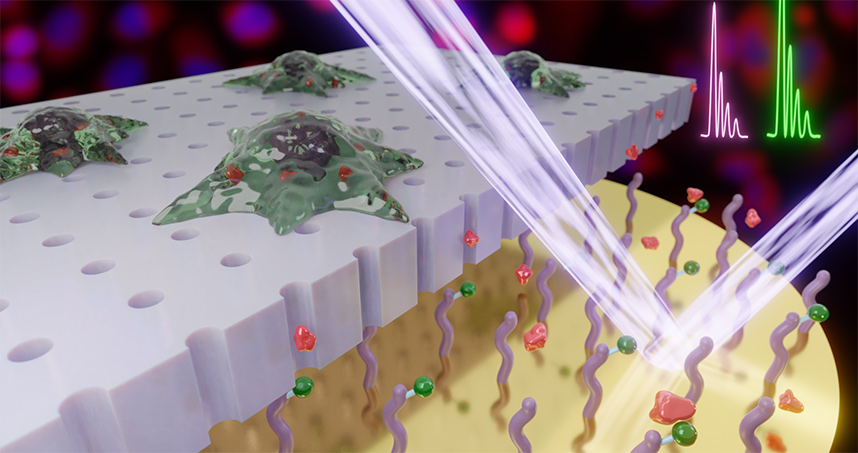New Method Allows Minimally Invasive Cell Sampling
Process allows cells to be sampled over time, offering window to responses that evolve
At any given moment, a variety of dynamic processes occur inside a cell, with many developing over time. Because current research methods for gene profiling or protein analysis destroy the cell, study is confined to just that one moment in time, and researchers are unable to return to the cell to examine how things change beyond that snapshot.
A team led by Northwestern Engineering faculty has developed a minimally invasive method to sample cells that can be repeated multiple times, one of the first to do so. The process, called localized electroporation, has implications in studying processes that evolve, such as cells’ response to treatments for cancer and other diseases.

Horacio Espinosa, James N. and Nancy J. Farley Professor in Manufacturing and Entrepreneurship in the McCormick School of Engineering, led the team that created the live cell analysis device (LCAD), which can non-destructively sample the contents from small number of cells many times.
When LCAD is coupled with SAMDI, a highly sensitive and label-free method for quantification of enzymatic activity using mass spectrometry, the intracellular contents sampled by LCAD are then analyzed for the presence of enzymes. SAMDI (Self-Assembled Monolayer Desorption Ionization) was developed in the lab of Milan Mrksich, Northwestern University vice president for research and Henry Wade Rogers Professor of Biomedical Engineering, Chemistry, and Cell and Molecular Biology.
“By exploiting advances in microfluidics and nanotechnology, localized electroporation can be employed to temporarily open small pores in the cell membrane enabling the transport of molecules into the cells or extraction of intracellular contents. Since the method is minimally invasive to the cells, it can be repeated multiple times without their disruption,” Espinosa said.
“Certain enzymes may be linked to disease pathways, such as certain types of cancers, and they may be the target of therapeutics. Using this platform, it is now possible to study how enzymatic activity varies between healthy cells and cells from a tumor biopsy,” Mrksich said.

The LCAD-SAMDI platform offers an opportunity for biologists and physicians to investigate how specific treatments may alter these enzymatic activities and the associated diseases over time.
“The platform is one of the world’s first technologies allowing this type of research, a biopsy but performed on cells at the nanoscale,” Espinosa said.
Said John A. Kessler, Ken and Ruthe Davee Professor of Stem Cell Biology at Northwestern’s Feinberg School of Medicine and study coauthor, “Without disrupting the cell, it provides a window to processes inside cells and enables research that can determine the quantity of an active enzyme, how enzymatic activity in cells changes over time, and what changes in the activity occur in response to a treatment.”
This method opens up the possibility to investigate time-dependent processes, like cell differentiation, disease progression, or drug response, at regular intervals.
“We envision that this technique can be used in scenarios such as screening drugs or designing and optimizing treatment courses that can arrest disease progression in cells,” Espinosa said.
Most established methods require killing the cells being analyzed. Currently, complex computational methods are used for retrieving temporal information from single snapshots, but assumptions about the dynamics and limitations on the time scales and scenarios remain.
The LCAD also can be used to deliver proteins into cells. The combination of delivery and sampling could potentially be used in studies involving delivery of molecules, like DNA and proteins, and investigating its effect on the activity of another via sampling.
“We have used the same concept of localized electroporation to do CRISPR gene editing and we are now using machine learning to automate the process,” Espinosa said.
Overall, this method can provide complementary information regarding cellular dynamics, which may not be possible using traditional assays. In the future, as the technology improves and sensitivity increases, it may be possible to sample temporal information for several different types of proteins simultaneously from the same cell populations.
The research, “Temporal Sampling of Enzymes from Live Cells by Localized Electroporation and Quantification of Activity by SAMDI Mass Spectroscopy,” was published May 26 in Small. Along with Espinosa, Mrksich, and Kessler, coauthors include Prithvijit Mukherjee, Eric J. Berns, Cesar A. Patin, Elamar Hakim Moully, Lingqian Chang, and S. Shiva P. Nathamgari, all from Northwestern University.
